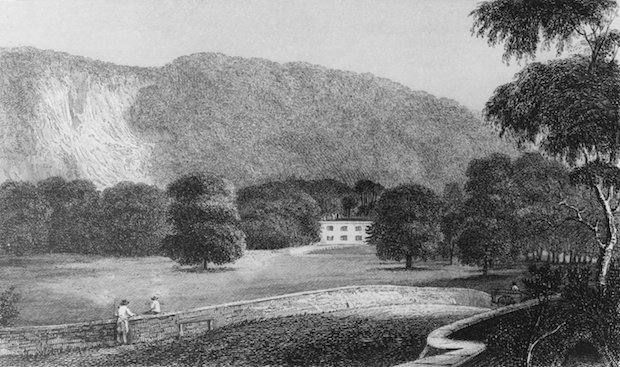From The Spectator, 7 November 1914:
By far the largest addition to or alteration in the scenery of Surrey and its commons has been the building of the hutments which are to form the winter quarters of the new Army. This is a change which is visible near and far. Go up Hindhead on a clear day, and from that sunlit and windy plateau look out east and north towards the chalk downs and the heights beyond Bagshot. The landscape has changed from the familiar slopes and levels of three months ago. The blues and greys and greens are streaked and slashed with yellow and white. The quiet of the pines and heather and the great stretch of English country spread to view from these high places has gone. It is as if those who bad hitherto walked about and looked at the heather and the woods had suddenly discovered that they must be put to another use ; which, indeed, is the decision that the owners of the commons have come to, only you do not realize it fully until you see all these camps and preparations for camps set out in rows before you, streak beyond streak and row after row, as a schoolboy may look over his lines of troops set out on the dining-room table. It is a rather strange comment on the efficiency (apart from the presence) of the German spy that the fact that an extra army of a million is being trained in this country should apparently still be refused belief in Germany. The Cologne Gazette, which observes that statements as to this army are “not very credible,” should arrange with an emissary to climb Hindhead and to gaze out over the small portion of England which is visible from the top.
Two months, one month, a week ago, there were large stretches of heather between Milford and Hindhead which were bare and brown and empty, and which still showed traces of the devastating heath fires of three years ago which burned acres of pines to the ground and left other acres with nothing but charred trunks thrusting leafless boughs above the new ling sprouting from the roots. Since two months ago stretch after stretch has changed from heather to flat building ground. The charred stems have been cut down; the heather has been burnt, or reburnt ; posts and flags set out to measure the sites have given place to piles of timber, heaps of bricks, pipes, trestles. Roads are being cut in the peat, and the heavy metal is being placed in the roadway almost the moment after the peat has been cut to make way for it. Beyond and about the roadways are the huts themselves, frameworks of timber posts with weatherboarding nailed on them, and roofs made warm with felt against rain and wind. The lines of huts stand furlong after furlong on each side of the road; they grow longer day after day, and day after day fresh sites seem to be chosen, with fresh piles of timber and bricks and pipes. To stare out over the altered heather and pine-woods is to be reminded of a song and a cartoon of the days of the war fifteen years ago, the last occasion when we set out to make a new army. To-day, as then, “the rooinek comes singing on the road.” The road waits on the rail. The railway sidings are full of truckloads of timber, water-pipes, sections of vast cisterns which will be riveted together on the hills miles from the station. Time presses, the camps must be built faster and faster still, and soon a light railway, branching from the siding, will be sending trollies and navvies swinging up to the open heather from the main line from London to Portsmouth.





Comments